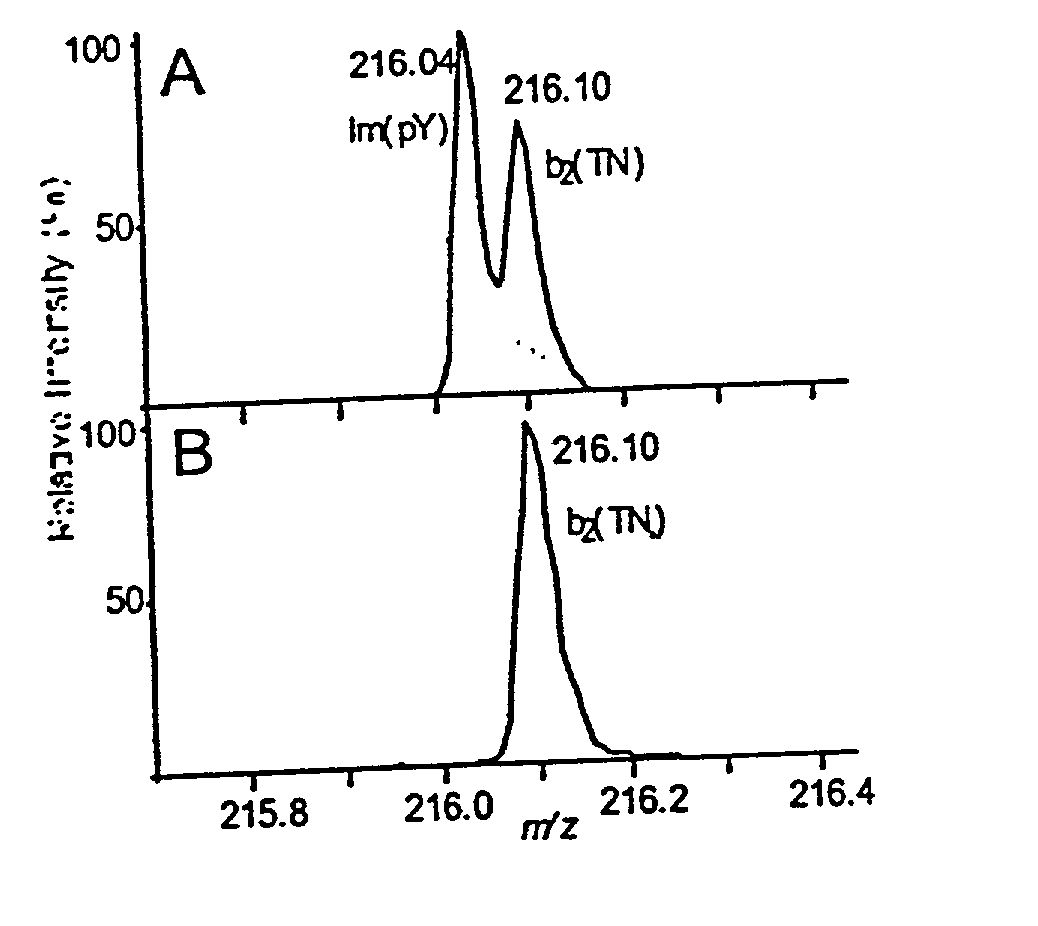Detection of modified amino acids by mass spectrometry
a mass spectrometry and amino acid technology, applied in the direction of isotope separation, material testing goods, particle separator tubes, etc., can solve the problems of difficult/severe analysis, increase the degree of complexity and difficulty, and difficulty in achieving the identification of phosphorylation sites on a protein,
- Summary
- Abstract
- Description
- Claims
- Application Information
AI Technical Summary
Problems solved by technology
Method used
Image
Examples
Embodiment Construction
[0067] The present method is exemplified in the following experiments. Chemicals were obtained from Sigma (St. Louis, Mo., USA). High purity solvents used for nanoelectrospray experiments were purchased from Labscan (Dublin, Ireland). The peptide TNLSEQ(pY)ADVYR was custom made by Sigma-Genosys (Pampisford, UK). The unphosphorylated counterpart was prepared by dephosphorylation using alkaline phosphatase (Roche Diagnostics, Mannheim, Germany) in 50 mM NH.sub.4HCO.sub.3 at 37.degree. C. for 1 hr. Single-strand DNA binding protein (SSB) was purchased from Stratagene, human transferrin was from Sigma and recombinant His-tagged RrmA was prepared by established techniques. Activated MAP-kinase 2 (MAPK) was purchased from Upstate Biotechnology (Waltham, Mass., USA). For in-gel digests, concentrations of 0.1 to 1 pmol MAPK were loaded onto 4-12% NuPage gels (Novex, San Diego, Calif., USA) and visualized either by colloidal Coomassie Blue staining (Colloidal Blue Staining Kit, Novex) or sil...
PUM
 Login to View More
Login to View More Abstract
Description
Claims
Application Information
 Login to View More
Login to View More - Generate Ideas
- Intellectual Property
- Life Sciences
- Materials
- Tech Scout
- Unparalleled Data Quality
- Higher Quality Content
- 60% Fewer Hallucinations
Browse by: Latest US Patents, China's latest patents, Technical Efficacy Thesaurus, Application Domain, Technology Topic, Popular Technical Reports.
© 2025 PatSnap. All rights reserved.Legal|Privacy policy|Modern Slavery Act Transparency Statement|Sitemap|About US| Contact US: help@patsnap.com



